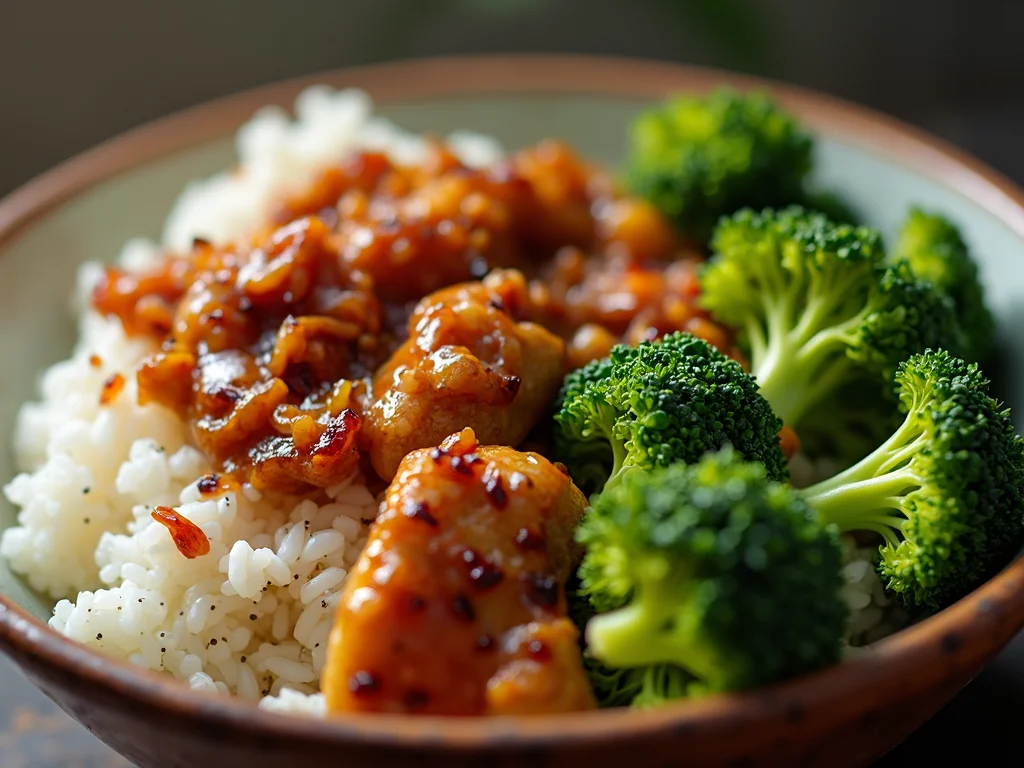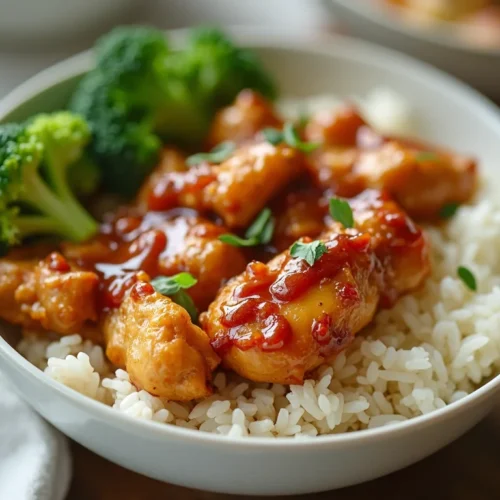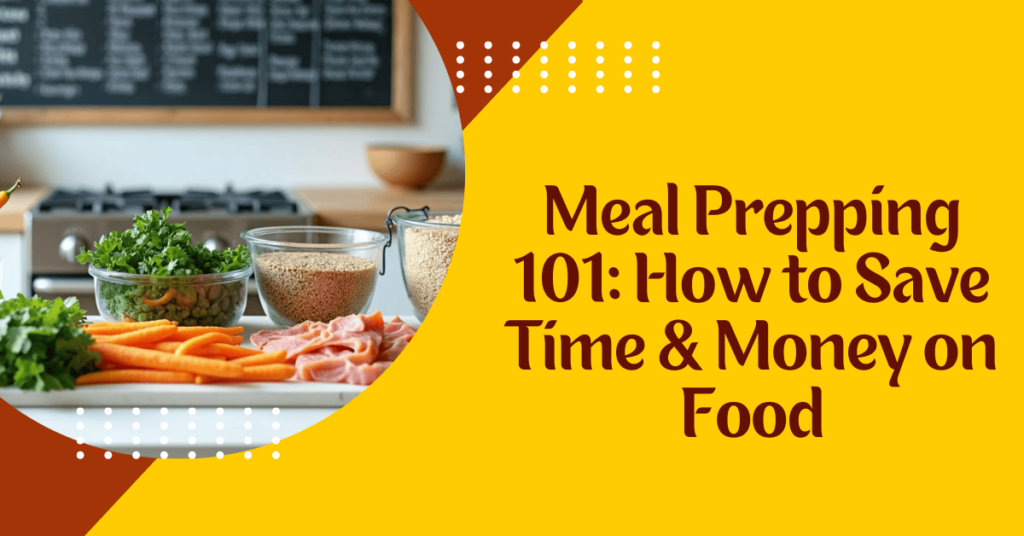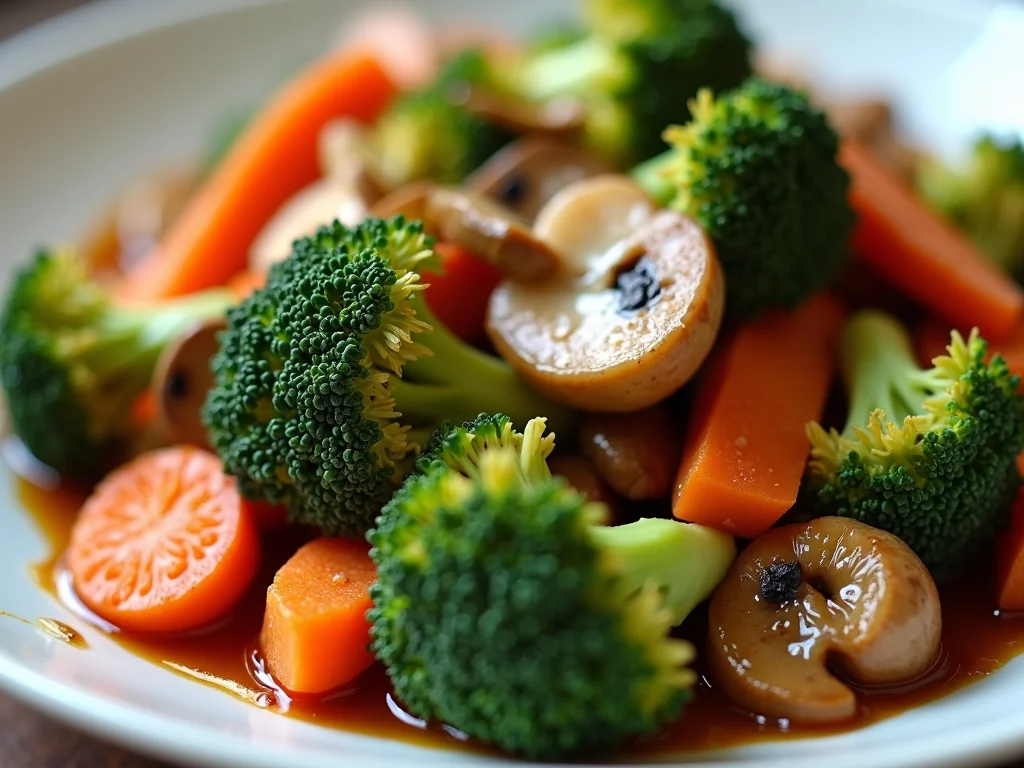Sick of the same old same old dinner? This sweet soy Glazed Chicken Rice Bowl with Broccoli & Cucumber will be your weeknight staple! Try envisioning juicy chicken smothered in a sweet soy glaze, steamed broccoli, and slices of cucumber over jasmine rice. A whole meal in one bowl that’s flavor, nutrition, and convenience all in one!.
I found this recipe during a hectic month when I needed quick, healthy food instead of takeout. This bowl was my sanity and budget savior! The chicken is satisfying, and the warm and cool aspects are a pleasant contrast. It’s naturally dairy-free and can be gluten-free with a swap. Made in under 30 minutes, this recipe shows that healthy food can be simple and tasty!
Why You’ll Love This Recipe
The glazed chicken rice bowl represents an optimal solution for modern meal planning, delivering exceptional nutritional value without sacrificing flavor or convenience. Understanding its key advantages will help you integrate this versatile dish into your regular meal rotation.
Versatile
This bowl-style recipe provides remarkable adaptability across various dietary preferences and nutritional objectives. The fundamental structure—protein, grain, and vegetables—creates a template that accommodates numerous variations:
- Substitute chicken with tofu, tempeh, or fish for different protein profiles
- Exchange white rice for brown, quinoa, or cauliflower rice to adjust carbohydrate content
- Modify the glaze components to create entirely different flavor profiles while maintaining the core nutritional balance
This versatility extends to serving occasions, functioning equally well as a weeknight family dinner, meal-prep option, or elegant dinner party offering when presented thoughtfully.
Budget-Friendly
Cost efficiency represents a significant advantage of this recipe, particularly when implemented strategically:
- Chicken thighs provide a more economical alternative to breast meat while offering enhanced flavor
- Rice delivers exceptional nutritional value per dollar compared to other grain options
- Broccoli and cucumber remain affordable year-round in most markets
- Bulk preparation reduces per-serving costs through economies of scale
- Home-prepared glaze eliminates the premium pricing of pre-made sauces
A complete serving typically costs $2.50-$3.50 per portion when prepared at home—significantly less than comparable restaurant offerings or pre-packaged alternatives while delivering superior nutritional quality.
Quick and Easy
Efficiency in preparation distinguishes this recipe from more complex culinary options:
- Total preparation requires 25-30 minutes from start to finish
- Active cooking time represents only 15-20 minutes of this total
- Multi-tasking opportunities exist throughout the preparation sequence
- No specialized equipment or advanced techniques required
- Component-based structure allows parallel preparation
For time-optimization, the marination step can be abbreviated to 10 minutes while still developing substantial flavor, making this recipe accessible even on the busiest weeknights.
Customizable
The modular nature of the glazed chicken rice bowl enables extensive personalization without compromising the fundamental nutritional profile:
- Adjust spice levels through the addition of chili flakes, sriracha, or gochujang
- Modify sweetness by varying honey quantities or substituting maple syrup or coconut sugar
- Create region-specific variations through strategic spice adjustments (ginger and sesame for East Asian, curry powder for South Asian, etc.)
- Incorporate seasonal vegetables based on availability and preference
- Scale portion sizes to accommodate different nutritional requirements
This adaptability prevents menu fatigue while maintaining consistency in nutritional outcomes—a critical factor for sustained healthy eating patterns.
Crowd-Pleasing
The universal appeal of this recipe stems from its balanced flavor profile and familiar components presented in an engaging format:
- Sweet-savory balance appeals to diverse palate preferences
- Individual components remain identifiable, accommodating selective eaters
- Interactive assembly options engage diners of all ages
- Visually attractive presentation enhances perceived value
- Balanced macronutrient profile creates sustained satisfaction
This combination of attributes makes the glazed chicken rice bowl particularly valuable for family settings where accommodating varied preferences presents a common challenge.
Ingredients in Glazed Chicken Rice Bowl with Broccoli & Cucumber
The exceptional quality of this recipe depends on thoughtful selection of each component. Understanding the function and optimal preparation of these ingredients ensures consistent results.
Chicken Breast
Serving as the primary protein source, chicken breast provides approximately 31g of complete protein per 100g serving while maintaining a favorable fat profile:
- Select uniformly-sized pieces (approximately 6-8oz each) for consistent cooking
- Consider tenderizing thicker sections to ensure even cooking
- Opt for free-range, hormone-free options when possible for superior flavor and ethical considerations
- Properly trimmed breast meat should have minimal visible fat while retaining enough for moisture
- For enhanced flavor, consider bone-in, skin-on varieties during initial cooking (removing skin before serving)
The relatively neutral flavor profile of chicken breast makes it an ideal canvas for the glaze, readily absorbing and showcasing the carefully balanced seasonings.
Broccoli
This cruciferous vegetable contributes significant nutritional density while providing textural contrast:
- Select heads with tight, dark green florets and firm stalks
- Approximately 1.5 cups of florets per serving provides optimal balance in the bowl
- Cut florets to uniform size (approximately 1-1.5 inches) to ensure consistent cooking
- Include upper stalk sections when properly peeled for additional fiber and reduced waste
- Fresh broccoli delivers superior texture, though frozen varieties can substitute when necessary
Proper preparation—typically brief steaming—preserves broccoli’s nutritional value while developing the ideal tender-crisp texture that complements the other components.
Rice
Functioning as the foundation of the bowl, rice provides sustained energy through complex carbohydrates:
- Long-grain varieties (particularly jasmine or basmati) offer ideal texture and aromatic qualities
- Brown rice introduces additional fiber and micronutrients for enhanced nutritional profile
- Precise water ratios (typically 1:1.5 for white rice, 1:2 for brown) ensure proper texture
- Rinsing before cooking removes excess starch for fluffier results
- Proper resting period (10 minutes covered after cooking) allows for moisture redistribution
The subtle flavor of properly prepared rice provides an ideal background that complements rather than competes with the more assertive components of the bowl.
Cucumber
Adding refreshing crispness and hydration, cucumber creates essential textural contrast:
- English or Persian varieties offer thinner skin and fewer seeds than standard cucumbers
- Approximate ratio of 1⁄4 to 1⁄2 cucumber per serving maintains proper balance
- Slicing techniques (thin rounds, half-moons, or matchsticks) influence both presentation and eating experience
- Optional light salting and draining removes excess moisture for enhanced crispness
- Serving at cool temperature maximizes the refreshing contrast with warm components
The high water content (approximately 96%) provides hydration while diluting the intensity of the glaze between bites, creating a balanced eating experience.
Glaze Ingredients
The signature flavor profile depends on precise balance of these components:
- Low-sodium soy sauce (3 tablespoons): Provides umami foundation and saltiness
- Honey (2 tablespoons): Creates caramelization and balances savory elements
- Fresh ginger (1 tablespoon, minced): Contributes aromatic heat and digestive benefits
- Garlic (2-3 cloves, minced): Adds depth and aromatic complexity
- Rice vinegar (1 tablespoon): Introduces acidity that brightens overall flavor profile
- Sesame oil (1 teaspoon): Delivers distinctive nutty notes and aromatic qualities
- Cornstarch (1 teaspoon, optional): Creates glossy texture and enhances adhesion to chicken
The proportional relationship between these elements creates the distinctive flavor profile that defines the dish, balancing sweetness, saltiness, acidity, and umami.
Instructions
Proper technique ensures consistent results while maximizing both flavor development and nutritional retention. Follow this systematic approach for optimal outcomes.
Preheat Your Pan
Beginning with proper equipment preparation establishes the foundation for successful execution:
- Select a heavy-bottomed skillet or wok with adequate surface area for chicken pieces
- Preheat over medium-high heat until water droplets dance when sprinkled
- Add 1-2 teaspoons of high smoke-point oil (avocado, grapeseed, or refined coconut)
- Distribute oil evenly across cooking surface
- Verify proper temperature by observing oil shimmering without smoking
This initial preparation prevents sticking while enabling proper Maillard reaction development for enhanced flavor complexity.
Cook the Chicken
Proper protein preparation ensures food safety while developing optimal texture:
- Pat chicken pieces dry with paper towels to promote browning
- Season lightly with salt and pepper (accounting for glaze sodium content)
- Arrange pieces in preheated pan with adequate spacing
- Cook undisturbed for 4-5 minutes until golden brown on first side
- Turn pieces once and continue cooking 3-4 minutes
- Verify internal temperature reaches 165°F (74°C) at thickest point
- Remove from heat and allow 5-minute rest before slicing
This approach maximizes moisture retention while ensuring proper doneness and flavor development.
Steam the Broccoli
Preserving nutritional integrity while achieving ideal texture requires precise cooking:
- Bring 1 inch of water to boil in pot with steamer basket
- Add uniformly-cut broccoli florets to basket
- Cover and steam 3-4 minutes until bright green and tender-crisp
- Remove immediately to prevent overcooking
- Optional: shock in ice water to preserve color and halt cooking process
- Drain thoroughly before incorporation into bowl
This gentle cooking method maintains micronutrient content while developing the ideal texture that complements other components.
Make the Glaze
Proper glaze preparation creates the distinctive flavor profile that defines this dish:
- Combine all liquid ingredients (soy sauce, honey, rice vinegar) in small bowl
- Add minced garlic and ginger
- If thickening desired, create slurry with cornstarch and 1 tablespoon cold water
- Heat small saucepan over medium heat
- Add combined ingredients and bring to gentle simmer
- Cook 2-3 minutes until slightly reduced and aromatic
- Add sesame oil after removing from heat
- Reserve portion for serving if desired
This methodical approach develops complex flavor while ensuring proper consistency for coating the chicken.
Assemble the Bowl
Strategic assembly maximizes both visual appeal and eating experience:
- Place 3/4 cup cooked rice as foundation in each bowl
- Position sliced glazed chicken over approximately 1/3 of rice surface
- Arrange steamed broccoli adjacent to chicken
- Place cucumber slices in remaining section
- Drizzle additional glaze over chicken and broccoli if desired
- Garnish with sesame seeds and sliced green onions for visual appeal and flavor enhancement
This thoughtful arrangement creates distinct flavor zones while enabling balanced bites combining multiple components.
Serve and Enjoy
Proper serving enhances the overall dining experience:
- Present immediately while chicken and rice remain warm
- Offer additional glaze on side for personalized adjustment
- Include appropriate eating utensils (chopsticks and/or fork)
- Suggest mixing components for varied flavor experiences throughout meal
- Pair with recommended beverage for flavor enhancement
This final consideration ensures optimal temperature contrast between components while preserving the textural integrity of each element.
How to Serve Glazed Chicken Rice Bowl with Broccoli & Cucumber
While functioning as a complete meal independently, strategic accompaniments can enhance the dining experience while accommodating varied appetite levels.
Fresh Salads
Light, acidic salad options create refreshing contrast with the glazed components:
- Simple green salad with rice vinegar dressing
- Cucumber-wakame seaweed salad
- Carrot-ginger slaw with citrus accents
- Lightly dressed bean sprouts with sesame
These additions increase vegetable content while providing palate-cleansing acidity between bites of the richer main components.
Crusty Bread
Despite crossing cultural boundaries, quality bread complements the bowl composition:
- Garlic-rubbed sourdough slices
- Sesame flatbread wedges
- Scallion pancakes cut into triangles
- Crisp rice crackers or shrimp chips
These starchy additions provide textural contrast while offering vehicles for capturing excess glaze and juices.
Creamy Accompaniments
Introducing creamy elements creates additional textural dimension:
- Avocado slices or cubes
- Spicy mayonnaise drizzle
- Yogurt-based cucumber sauce
- Soft-boiled egg with runny yolk
These additions introduce beneficial fats that enhance micronutrient absorption while creating indulgent mouthfeel that balances the leaner components.
Vegetable Sides
Additional vegetable preparations expand nutritional diversity:
- Miso-glazed eggplant
- Stir-fried snow peas with garlic
- Quick-pickled radishes
- Sautéed baby bok choy
These complementary vegetable options introduce additional phytonutrients and flavor dimensions while maintaining alignment with the main dish profile.
As a Standalone
The balanced composition makes this bowl entirely complete independently:
- Adjust portion sizes according to individual energy requirements
- Increase protein quantity for higher athletic demands
- Vary carbohydrate portion for specific dietary approaches
- Ensure adequate hydration alongside meal
This self-contained meal solution provides complete nutrition without requiring additional components, making it particularly valuable for routine meal planning.
Additional Tips
Strategic implementation enhancements optimize both efficiency and outcomes when preparing this recipe.
Prep Ahead
Component preparation in advance significantly reduces active cooking time:
- Marinate chicken up to 24 hours in refrigerator for enhanced flavor penetration
- Prepare rice 1-2 days ahead and refrigerate for quick reheating
- Cut vegetables and store in water-filled containers for maintained freshness
- Pre-make glaze and refrigerate up to one week in airtight container
- Portion all ingredients according to meal plan for streamlined assembly
This systematic preparation reduces weeknight cooking time to less than 15 minutes while maintaining optimal quality.
Spice It Up
Flavor enhancement options accommodate diverse preferences:
- Add 1-2 teaspoons sambal oelek or sriracha to glaze for moderate heat
- Incorporate 1/4 teaspoon cayenne powder for background warmth
- Include thinly sliced fresh chilis as garnish for adjustable spice level
- Offer chili oil on side for individualized heat customization
- Consider dried chili flakes as finishing touch for both visual appeal and heat
These modifications maintain the fundamental flavor profile while introducing heat variations according to preference.
Dietary Adjustments
Strategic substitutions accommodate specific nutritional requirements:
- Replace soy sauce with coconut aminos for soy-free and lower-sodium version
- Substitute honey with maple syrup for vegan adaptation
- Exchange chicken for firm tofu or tempeh for plant-based protein
- Use cauliflower rice for grain-free and lower-carbohydrate profile
- Increase protein and reduce carbohydrates for ketogenic approach
These modifications preserve core flavor profiles and nutritional balance while accommodating specialized dietary patterns.
Storage Tips
Proper storage methods maintain quality for meal-prep applications:
- Store components separately for optimal texture preservation
- Keep cucumber uncut until serving time to prevent moisture loss
- Refrigerate prepared components in airtight containers up to 4 days
- Freeze cooked chicken with glaze up to 1 month in freezer-safe containers
- Allow frozen components to thaw gradually in refrigerator before reheating
These approaches maximize quality retention while enabling efficient meal preparation for multiple days simultaneously.
Double the Batch
Strategic scaling creates additional efficiency:
- Prepare twice required quantity of chicken and freeze portion for future meals
- Scale rice preparation for multiple uses throughout week
- Increase glaze production for use in additional recipes
- Maintain vegetable preparation at single-meal quantities for optimal freshness
- Consider varied applications for components (wraps, salads, fried rice)
This approach maximizes kitchen efficiency while reducing per-meal preparation time substantially.
FAQs
Can I use chicken thighs instead of breasts?
Yes, boneless, skinless chicken thighs provide an excellent alternative with enhanced juiciness and flavor. Due to the higher fat content and different thicknesses, adjust the cooking time to approximately 6-7 minutes per side. For food safety, the internal temperature should still reach 165°F (74°C).
How can I make this recipe gluten-free?
Replace regular soy sauce with certified gluten-free tamari or coconut aminos. Verify that all other packaged ingredients (particularly any pre-made components) are certified gluten-free. The remaining ingredients are naturally gluten-free when prepared cleanly without cross-contamination.
Can I prepare this as a meal-prep option?
This recipe functions exceptionally well for meal preparation. Store cooked components separately in the refrigerator for up to 4 days. Keep cucumber separate and slice just before serving. Reheat chicken and rice gently with 1 tablespoon water added to prevent drying during reheating process.
What’s the best rice variety to use?
Jasmine rice offers ideal texture and aromatic qualities that complement the glaze flavors. For increased nutritional value, brown jasmine rice provides additional fiber while maintaining an appropriate flavor profile. Properly cooked short-grain rice also functions well, with slightly increased stickiness that effectively captures the glaze.
How can I increase the vegetable content?
Incorporate additional vegetables while maintaining flavor compatibility: shredded carrots, sliced bell peppers, edamame, or snow peas integrate seamlessly. Consider reducing rice portion slightly when adding substantial vegetable quantity to maintain appropriate macronutrient balance.
Read More Recipes:-
- Honey Garlic Butter Baked Salmon Recipe
- Broccoli, Carrot, and Mushroom Stir-Fry
- Classic Lasagna Recipe
- Top 8 Authentic Italian Pasta Recipes You Can Make at Home
Final Thoughts
The chicken rice bowl with broccoli and cucumber glazed is a perfect combination of nutrition, taste, and convenience. Understanding the role of all ingredients and using proper techniques allows you to create a versatile meal that is suitable for various tastes while ensuring high nutritional quality.
Glazed Chicken Rice Bowl with Broccoli & Cucumber
Ingredients
For the Chicken Glaze
- 2 boneless skinless chicken breasts (sliced)
- 2 tbsp soy sauce
- 1 tbsp honey or brown sugar
- 1 tbsp sesame oil
- 1 tbsp rice vinegar
- 1 clove garlic minced
- ½ tsp ginger grated
- ½ tsp red pepper flakes optional
For the Bowl
- 2 cups cooked rice white, brown, or jasmine
- 1 cup broccoli florets steamed
- ½ cup cucumber thinly sliced
- 1 tbsp sesame seeds for garnish
- 1 green onion chopped, for garnish
Instructions
- Prepare the Glaze: In a bowl, whisk together soy sauce, honey, sesame oil, rice vinegar, garlic, ginger, and red pepper flakes.
- Cook the Chicken: Heat a pan over medium heat, add the chicken slices, and cook for 4-5 minutes until golden. Pour in the glaze and simmer for 3-4 minutes until thickened.
- Prepare the Bowl: Cook the rice, steam the broccoli, and slice the cucumber.
- Assemble: Divide the rice into bowls, top with glazed chicken, broccoli, and cucumber.
- Garnish & Serve: Sprinkle sesame seeds and green onions on top. Serve warm and enjoy!




